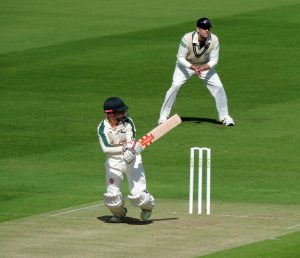 Australian cardiologists have accused their US counterparts of bowling them a wrong ‘un by classifying cricket as a sedentary sport with low risk for cardiac adverse events.
Australian cardiologists have accused their US counterparts of bowling them a wrong ‘un by classifying cricket as a sedentary sport with low risk for cardiac adverse events.
The American College of Cardiology has put cricket in the same category IA bracket as bowling, golf and yoga as being “low static” and “low dynamic” in respect to cardiovascular demands.
This has led to a protest from the Australian sports cardiovascular community, who are appealing to the umpire on the ACC’s “Mitchell classification”, which is widely used in clinical decisions regarding participation in sports by athletes with known cardiovascular disease.
They say cricket is a highly dynamic sport that comes with a risk of cardiac arrhythmia and sudden death in at-risk individuals.
In an article in the British Journal of Sports Medicine, Professor Chris Semsarian of Sydney University and colleagues say it is wrong for cricket to be put in a low risk category that does not advise any restriction from participation, irrespective of cardiovascular disease status.
“For example, the guidelines would suggest that James Taylor, who retired from cricket due to arrhythmogenic right ventricular cardiomyopathy,” they note.
The ACC’s classification of cricket could also have implications for people taking anticoagulants, they warn.
In their article they provide data from physiological studies showing that cricket is on a par with baseball – and even rugby – when it comes to exertion. Training data from GPS monitors show that in a one day international a cricket player does an average of 24 sprints at speeds exceeding 21 km/hour.
“These speeds maintained for 15–20 s mandate a high, although very transient, substrate utilisation and oxygen consumption,” they write.
They therefore call on the ACC to reclassify cricket as a category IIB (moderate static, moderate dynamic) sport along with American Football, rodeo – and synchronised swimming.
“The guidelines are an extremely useful resource which now have an important place in sports cardiology – they can be further improved to remain a key reference for sports physicians, cardiologists and general practitioners in advising sports participation recommendations for those athletes/patients with diagnosed cardiovascular disease,” they say.